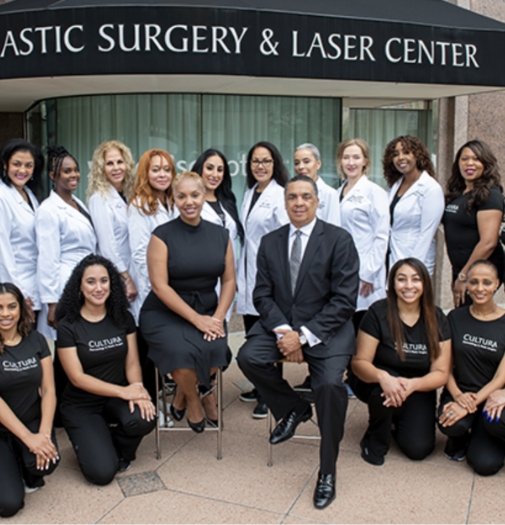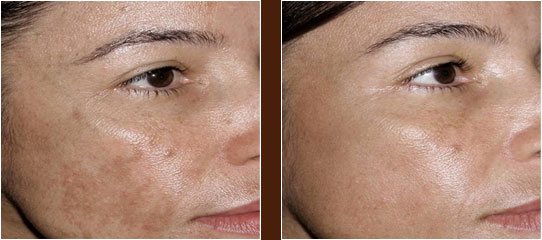Understanding Moles: Evaluation and Removal Options
Moles are common skin growths that can appear anywhere on the body, often presenting as dark spots or raised blemishes. While most moles are harmless, some individuals choose to have them removed for cosmetic reasons, while others may need removal for medical concerns. At Cultura Dermatology & Plastic Surgery in Washington, DC, we specialize in the safe and effective removal of moles, ensuring clear and healthy skin.
What Causes Moles?
Moles, also known as nevi, develop due to clusters of pigmented cells forming on the skin. Factors contributing to mole formation include:
- Genetics: Moles often run in families and can be inherited.
- Sun Exposure: UV rays can stimulate the growth of new moles and darken existing ones.
- Hormonal Changes: Puberty, pregnancy, and aging can influence mole development.
- Skin Type: Certain skin types are more prone to developing moles, including individuals with darker skin tones.

Recognizing the Different Types of Moles
Moles, or nevi, are common skin growths that vary in appearance, causes, and potential risks. Understanding the different types can help in monitoring changes and ensuring skin health:
- Congenital Moles: Present at birth or appearing shortly after, these moles vary in size and color. Larger congenital moles may carry a slightly higher risk of developing into skin cancer later in life.
- Common (Acquired) Moles: These are the typical small, round, brown spots that develop throughout childhood and early adulthood. They are usually harmless but should be monitored for changes.
- Atypical (Dysplastic) Moles: Often larger than common moles, with irregular borders and varying colors, these moles can resemble melanoma. While not cancerous themselves, having many atypical moles can indicate a higher risk of skin cancer.
- Junctional, Compound, and Intradermal Moles: These classifications are based on where the mole’s pigment-producing cells are located in the skin. Junctional moles are flat and dark, compound moles are slightly raised with pigmentation, and intradermal moles are flesh-colored and more elevated.
- Spitz Nevus: A dome-shaped, pink, red, or brown mole that often appears in children and young adults. While generally benign, some can resemble melanoma and may require removal.
- Halo Nevus: A mole with a surrounding ring of lighter skin, caused by the immune system attacking the mole’s pigment cells. These are usually harmless but should still be monitored.
- Blue Nevus: A deep blue or gray-colored mole caused by pigment being deposited deeper in the skin. Most are benign but should be checked if they grow or change.
While most moles are harmless, changes in size, shape, color, or texture can be warning signs of melanoma. Regular self-examinations and dermatological check-ups are key for early detection and skin health.
Mole Removal Treatments at Cultura Dermatology & Plastic Surgery
At Cultura, we offer both non-surgical and surgical mole removal techniques to provide the best possible outcome based on the size, type, and location of the mole.
Non-Surgical Mole Removal
For smaller facial moles, particularly Dermatosis Papulosis Nigra (DPNs) found on the face, neck, and chest, we use a hyfrecator, an electrical cautery device that safely removes moles in just one treatment. This method:
- Cuts off the mole’s blood supply, causing it to naturally fall off within weeks.
- Leaves little to no scarring, ensuring smooth, clear skin post-treatment.
Laser Mole Removal
Larger moles or those located on more delicate areas may be treated with laser therapy, which:
- Uses precision light energy to break down pigmented cells.
- Is non-invasive and ideal for cosmetic mole removal.
- Requires minimal recovery time with little to no scarring.
Surgical Mole Excision
For larger, raised, or suspicious moles, surgical excision is often recommended. This method:
- Ensures complete removal of the mole, including deeper pigmented cells.
- Is performed under local anesthesia for a pain-free experience.
- May require stitches, but healing is typically smooth with proper aftercare.
Why Choose Cultura Dermatology & Plastic Surgery?
For over 20 years, Cultura has been a leader in dermatological care, providing expert mole evaluations and removals. Our team, led by Dr. Eliot Battle and Dr. Kelly Bolden, ensures that every procedure is performed with the highest level of safety, precision, and cosmetic consideration.
The Cultura Advantage:
- Extensive Experience: Over 8,000 successful mole removals performed.
- Inclusive Care: Expertise in treating all skin types and tones, ensuring safe and effective results.
- Advanced Technology: Cutting-edge laser and non-surgical treatments tailored to each individual.
- Proven Patient Satisfaction: Our commitment to excellence has earned us a reputation for delivering natural-looking results with minimal downtime.










